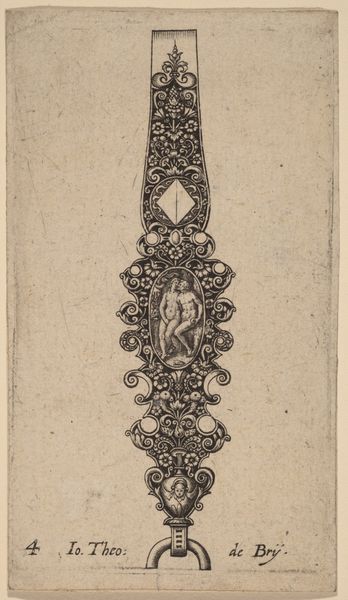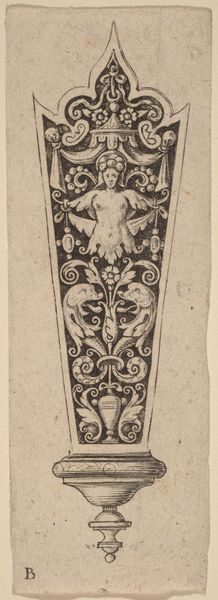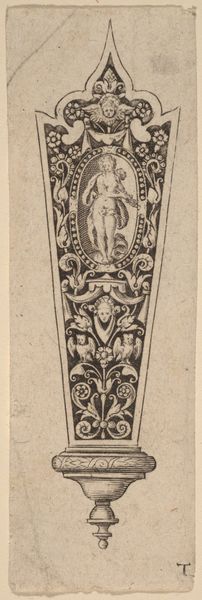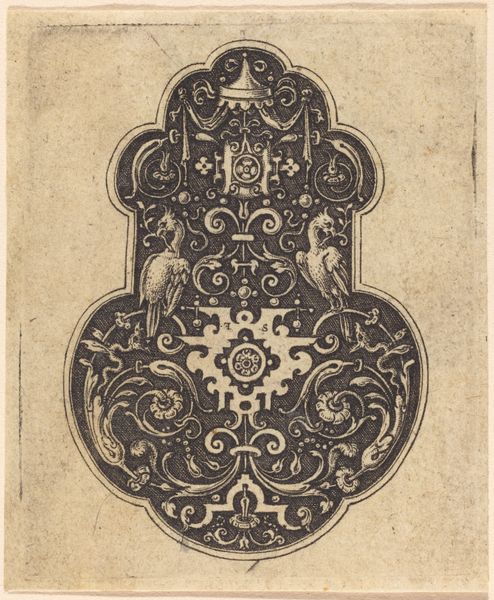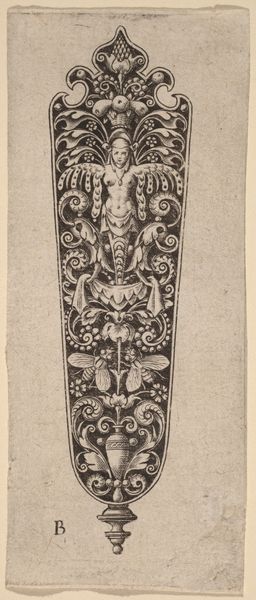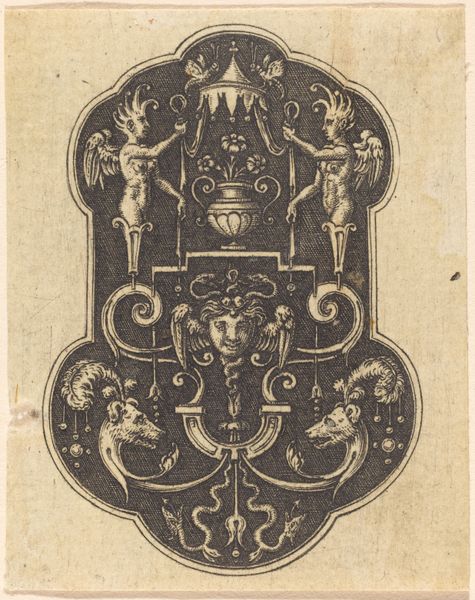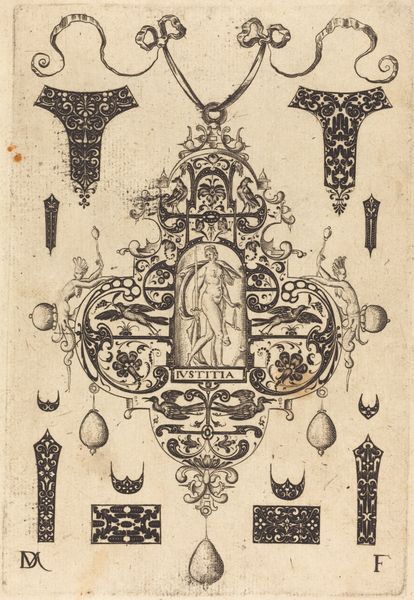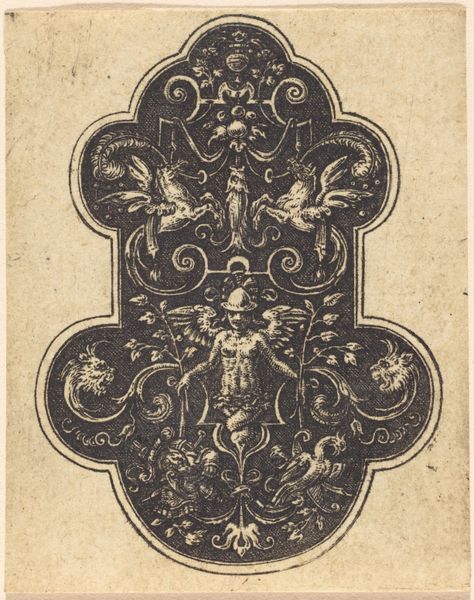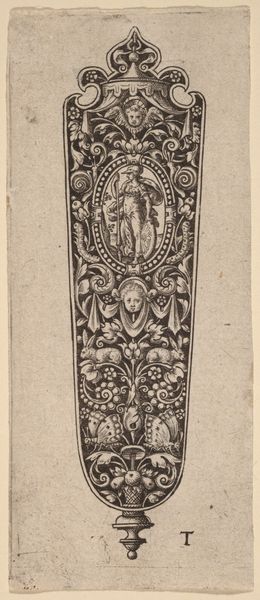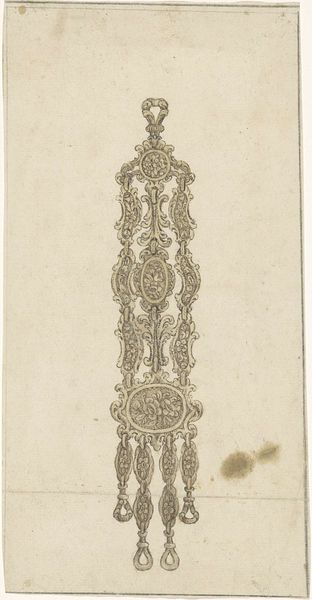
ornament, print, ink, engraving
#
ornament
#
baroque
# print
#
figuration
#
ink
#
line
#
engraving
Copyright: National Gallery of Art: CC0 1.0
Curator: This striking print, entitled "Ornament", comes from the hand of Theodor de Bry, though its precise date remains unknown. What are your first impressions? Editor: It’s so linear. All those precisely engraved lines creating intricate shapes… it looks almost like a technical drawing for an elaborate, if rather bizarre, spoon. The stark contrast gives it a graphic quality I appreciate. Curator: De Bry was known for his detailed engravings, especially those used in illustrating travel books and historical accounts. This particular piece highlights the prevailing interest in ornamentation during his time. Think about the late Renaissance and early Baroque periods—surface embellishment was highly valued. Editor: Yes, the repetition of motifs and the symmetrical design definitely place it within a decorative context. The cherubs, the stylized foliage, even that strange little house at the top, all seem geared towards surface enhancement rather than any deeper symbolic meaning. What kind of labor was involved in producing a print like this? Curator: A print such as this would likely have been reproduced and distributed widely. Its appeal probably lied in offering design inspiration for artisans crafting luxury goods. The engraving process itself, of course, was laborious and skilled, requiring precise cutting into a metal plate. Consider its use as a tool for social distinction. Owning objects adorned with such designs elevated one’s status. Editor: Interesting point. To think of this image not as a standalone artwork, but as a kind of template available for broader consumption is an important aspect. Curator: Indeed. It really blurs the lines between art and design. What starts as an engraving ends up embellishing furniture or jewelry in affluent households. Editor: The material afterlife, as it were. It does make you consider the value placed on the print itself versus the end products it inspired. Perhaps its value lies more in its replicability than its originality. Curator: Precisely. It sheds light on how the Baroque era transformed visual culture and leveraged print media for widespread dissemination of decorative motifs, shaping tastes and asserting hierarchies through the power of ornament. Editor: Ultimately, its the interplay of skilled craft and widespread availability that fascinates me most about this “Ornament.” Thanks for guiding us.
Comments
No comments
Be the first to comment and join the conversation on the ultimate creative platform.
